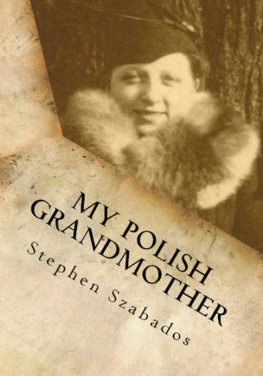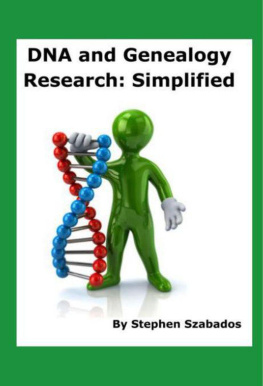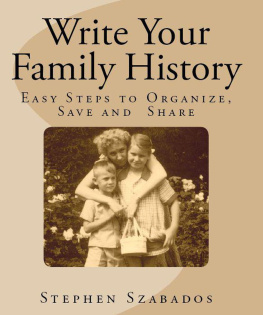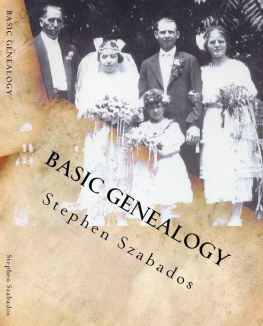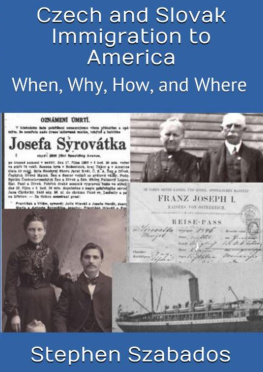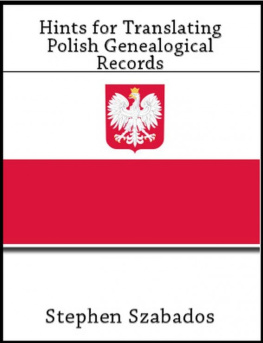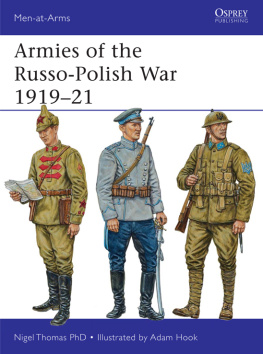My PolishGrandmother:
from Tragedy inPoland
to her RoseGarden
in America
By StephenSzabados
Copyrighted 2015
ISBN: 9781370243532
Table ofContents
I ntroduction
Anna Chmielewski was mygrandmother. She was physically small but a large inspiration in mylife. She stood less than 5 feet tall and weighed less than100 pounds but she dominated our home. She never raisedher voice but we all followed her instructions more due tolove than due to fear.
I believe that she gained her strengthfrom the tragedy of her early life in Poland and the challenges sheovercame to start her new life in America. She worked hard everyday but still found time to be happy working in her garden andbeing with her family.
The story of her life isdifferent from the many stories of immigrants because it is told from the perspective of a woman. What challenges and fears did they overcome to establish anew life in a new land?
This book is about the life of aPolish woman immigrant from the Russian partition of Poland. Itdescribes the area where she was born, her early life and thetragedies that affected her before she left for America. Sheovercame the challenges of travel across the Atlantic to the UnitedStates and finding herself alone in her new country she found thestrength to build a new life.
The book asks questions about herfears in making these changes and hopefully will give the readerinsights that will help them understand their immigrant ancestorsmore.
In writing mygrandmother's story I wanted to go beyond the names, dates andpictures in the albums. Anna was more than that. It is veryimportant to ask why she did what she did.
As you read Anna's story, ask the same questions about your ancestors. If you do, yourview of your family history will definitely change.
My grandmother Anna Chmielewska was the youngest of ninechildren and very small in stature. However, in her householdin America, she was in charge. My parents, my sisterand I lived with her and my grandfather for aboutten years, and we all did things her way. She did not have adominating personality, but she was always incommand when she was in the room. I would describe her as a kindand loving person, but I think the family followedher instructions more out of love and respect and not out offear.
Anna was born inJune 1899 to Aleksander Chmielewski and Julia Zaluska inPrzezdziecko- Pierzchaly , Polish-Russia and she wasbaptized the next day in the Assumption ofthe Blessed Virgin Mary Catholic Church innearby Andrzejewo. Her father and her mother were descendants ofnobility. Unfortunately, her father died when she was six monthsold in January 1900. He was forty-two at the time of hisdeath.
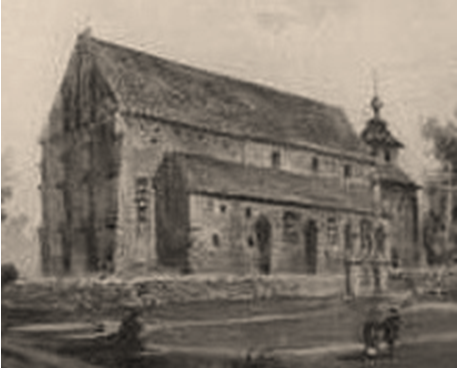
Assumption of the Blessed Virgin Mary
Catholic C hurch inAndrzejewo
Anna and her family livedon the farm that was owned by her grandfather AdamChmielewski. When Anna was born, hermother, Julia, was in charge of the household becausegrandmother Teodory had died in 1895. BeforeAleksander died, he had begun to take on the responsibility forrunning the farm, and he would have inherited it ifhe had lived. After he died, the right to inherit the farm passedto his oldest son Wladyslaw.
The family farm inPrzezdziecko- Pierzchaly was located about 3 milesnorth of Andrzejewo and along the river Maly Brok. It was a smallvillage with nine families and sixty residents. Today, it does notappear on any maps because its homes are now part of the village ofPrzezdziecko- Jachy . This area is about 60miles northeast of Warsaw, and all of the lands were oncepart of a large manor estate which had belonged to the Przezdzieckifamily. Many of the villages in the area have a two part name withPrzezdziecko as the first part. Over time the large estate wasdivided among each generation of heirs until most of the farms weresmall and could barely support one family. The Chmielewski Farm was one of these small farms.
The Chmielewski homein Pierzchaly was small with approximately 500 square feet ofspace inside. It had glass windows to let the light in but at nightcandles and oil lamps were used since electricity did notcome to their village until 1970. Water was brought in from thewell for cooking and washing. Wood from the nearby forest was used in the stovethat was in the center of the home and which was used forcooking and heating. The interior was finished with wood flooring, and the main area was large enough for cooking, eating and asmall sitting area.
Initially, there was oneadditional room on the main level where grandparents Adamand Teodory slept. Another room was added forAlexander and Julia after their marriage. The children slept in aspace that was above the ceiling and under the thatched roof. AfterAlexander had died a small space was made forWladyslaw to sleep on the main level. As an infant, Anna slept inthe same room as her parents and after the death of her father shecontinued to sleep with her mother. Siblings Marianna, Stefania,Boleslaw and Hipolit shared the upper level sleepingspace.
The second building on theproperty was about the same size as the house, and it servedas the barn for the livestock and storage for most of the grain.There was also a root cellar where the vegetables, fruits, jams andother foods werestored .
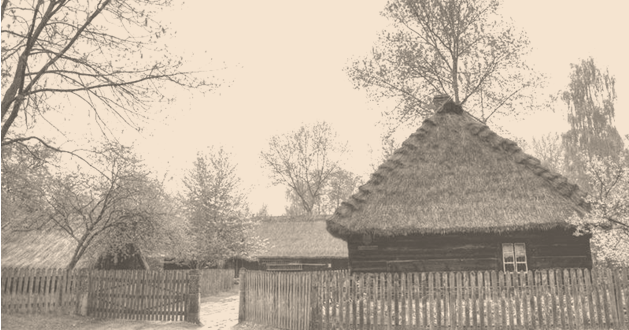
I was told by a cousinwho grew up in the area that a typical breakfast was " zupa mleczna " which was a porridge type mealthat was a mixture of milk and cereal grains. The table alsoincluded homemade bread along with homemade butter and honey. Thehoney came from the family beehives. To drink, there was milkfrom the family cow and white coffee which is a coffee substitutemade from local grains such as rye or wheat .
Various soups, salads, and a meat dish were normally served for dinner. Thetypical soups were mushroom , peas or beans with potatoes,sour pickle with cucumbers, tomato with homemade noodles, andchicken broth with noodles. The traditional salads were Mizeria (cucumber), surwka z biaej kapusty ( coleslaw) and Surwka Warzywna ( vegetable ) . The main dishes were Schabowy kotlet ( pork tenderloin) , owcy gulasz ( Hunters stew ) and Kotlet mielony (minced meat).
The family slaughteredtheir pigs to make sausages, hams and other cuts of meats. Meatswere pickled or salted and dried to preserve them for storage.Adam, Alexander and then the boys earned extra income by beingbutchers for some of the other farms.
The farm was small with only about 5 acres of tillableland. The fields were cropped in threeor four narrow strips, with each strip growing a differentcrop. The family planted wheat, oats, rye,corn, beets, potatoes, tomatoes, onions, carrots, cabbages,cucumbers and beans. They had a cow that gave the family milk, theybred pigs for sale and slaughter, and they had about a dozenchickens for their eggs and occasional chicken in the pot for soupsand stews. The most important animal that they owned was theirhorse that furnished the muscle to plow the fields and pull loadson the cart.
The chores that the Chmielewskichildren had included:
The cow was milked twice a day.
Eggs were gathered from the hens.
The horse and thechickens werefed .
Water was brought fromthe well for cooking and washing.
Wood was brought in from the pileoutside for the cooking stove and heat.
Adam, Aleksander, andthe older boys fell trees to keep the wood pilesupplied.
Next page
